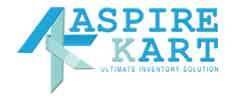Description

iMagic Inventory

Trunk
Comprehensive Overview: iMagic Inventory vs Trunk
iMagic Inventory and Trunk are both inventory management solutions, but they differ in terms of their primary functions, target markets, market share, user base, and differentiating factors. Here’s a comprehensive overview:
a) Primary Functions and Target Markets
iMagic Inventory:
- Primary Functions:
- iMagic Inventory offers inventory control, stock management, order management, billing and invoicing, customer management, and reporting functionalities.
- The software is designed to be user-friendly, making it easy for businesses to set up and manage.
- It includes features such as barcode support, reordering prompts, and integration with other systems like QuickBooks for accounting.
- Target Markets:
- Small to medium-sized businesses (SMBs) across various industries such as retail, manufacturing, and distribution.
- Companies that require basic yet effective inventory management without the need for complex integration or high-level customization.
Trunk:
-
Primary Functions:
- Trunk focuses on centralized inventory management, particularly for multi-channel e-commerce sellers.
- It offers real-time inventory synchronization across various sales channels such as Shopify, Amazon, eBay, and Etsy.
- Trunk provides tools for bundling, kitting, and inventory forecasting.
-
Target Markets:
- E-commerce businesses and online retailers, particularly those operating across multiple platforms.
- Companies seeking seamless integration with multiple sales channels to avoid overselling and stockouts.
b) Market Share and User Base
As of the latest data available:
-
iMagic Inventory:
- Holds a modest share in the SMB sector due to its affordability and ease of use.
- It is generally favored by brick-and-mortar businesses and those new to inventory management software.
-
Trunk:
- Has a growing market share within the e-commerce sector, driven by the boom in online retail.
- Its user base includes many small businesses and individual sellers who benefit from its multi-channel support and synchronization capabilities.
c) Key Differentiating Factors
-
Integration and Synchronization:
- iMagic Inventory is known for its standalone functionality that can integrate with accounting software like QuickBooks.
- Trunk differentiates itself with its strong synchronization capabilities across multiple online sales channels, making it a preferred choice for e-commerce businesses.
-
Ease of Use vs. Specialization:
- iMagic Inventory is designed for ease of use with a focus on traditional inventory management across fewer digital platforms.
- Trunk offers specialization in managing complexities of online sales channels, making it more advantageous for e-commerce but potentially more complex for traditional businesses.
-
Customer Focus:
- iMagic Inventory appeals to companies that need straightforward inventory management and might not have dedicated IT support.
- Trunk is targeted more towards tech-savvy businesses that already leverage multiple online sales platforms and need a solution to consolidate their inventory management across those channels.
In summary, iMagic Inventory and Trunk serve different niches within the inventory management industry. iMagic Inventory is suited for traditional and local businesses with simpler needs, while Trunk is tailored for e-commerce businesses operating on multiple online platforms. These differences in functionality, target market, and integration capabilities define their respective places in the market.
Contact Info

Year founded :
Not Available
+44 75 4041 5158
Not Available
United Kingdom
Not Available

Year founded :
2018
Not Available
Not Available
United States
Not Available
Feature Similarity Breakdown: iMagic Inventory, Trunk
To provide a feature similarity breakdown for iMagic Inventory and Trunk, we can look into a few key aspects:
a) Core Features in Common
-
Inventory Management: Both iMagic Inventory and Trunk focus on core inventory management capabilities, allowing users to track stock levels, manage product information, and handle purchase orders efficiently.
-
Sales Tracking: These tools offer features to manage and track sales transactions. This includes tracking orders and managing customer information.
-
Reporting and Analytics: Both systems provide reporting tools that help users generate insights about their inventory status, sales performance, and overall business health.
-
Multi-location Support: iMagic Inventory and Trunk generally allow for the management of inventory across different locations, which is crucial for businesses operating in multiple places.
-
Integration Capabilities: They often support integration with other software systems (e.g., accounting software like QuickBooks) to streamline data flow and improve business processes.
b) User Interface Comparison
-
iMagic Inventory: Typically, iMagic Inventory is known for its straightforward, no-frills user interface. It is designed to be easy to navigate, with accessible menus and straightforward data entry screens, focusing primarily on functionality over style.
-
Trunk: Trunk offers a more modern, user-friendly interface that is often praised for its aesthetic appeal and ease of use. The layout tends to be more visually driven, with dashboards that offer quick analytics and insights.
c) Unique Features
-
iMagic Inventory:
- Customizable Reports: iMagic Inventory may offer more in-depth customization options for reports, allowing users to tailor the reports specific to their business needs.
- Barcode Scanning Support: It often includes robust barcode scanning features, which facilitates speed and accuracy in inventory management operations.
-
Trunk:
- Syncing Across Channels: Trunk is particularly strong in syncing inventory levels across multiple sales channels (e.g., Shopify, Amazon, eBay), making it an ideal solution for businesses that operate on several ecommerce platforms.
- Kitting and Bundling: Trunk may offer advanced features for product kitting and bundling, which is beneficial for businesses that sell grouped products.
- Real-time Syncing: Trunk tends to emphasize real-time inventory updates, which can help prevent overselling and stockouts, crucial for high-volume online sellers.
Both products serve distinct user needs depending on the complexity of the inventory operations and the specific business requirements. While iMagic Inventory provides a more traditional inventory management experience suitable for small to medium-sized businesses, Trunk is tailored towards e-commerce merchants looking for seamless multichannel integration.
Features

Supplier Management
Inventory Management
Reporting
Customer Management

Collaboration Tools
User Experience
Automation and Integration
Integrated Source Control
Security Features
Best Fit Use Cases: iMagic Inventory, Trunk
iMagic Inventory and Trunk are both inventory management solutions, each with distinct features and target use cases. Here's an overview of the best fit use cases for each:
iMagic Inventory
a) For what types of businesses or projects is iMagic Inventory the best choice?
-
Small to Medium Businesses (SMBs):
- iMagic Inventory is an excellent choice for small to medium-sized businesses due to its cost-effectiveness and ease of use.
- It is particularly beneficial for retail shops, small wholesalers, or manufacturers who need a straightforward inventory management solution without excessive complexity.
-
Businesses Seeking Offline Solutions:
- Companies that require offline functioning due to unreliable internet connectivity or preference for local data control will find iMagic suitable.
- Users who prefer desktop applications over cloud-based solutions may favor iMagic Inventory.
-
Companies with Basic Inventory Needs:
- iMagic is ideal for businesses that require fundamental inventory management features such as tracking stock levels, sales, and purchase orders.
d) How does iMagic Inventory cater to different industry verticals or company sizes?
-
Industry Verticals: iMagic Inventory is versatile and can be applied across various industries like retail, manufacturing, and wholesale, thanks to its general inventory tracking capabilities.
-
Company Sizes: While predominantly intended for SMBs, small and family-run enterprises benefit the most due to the product's simplicity and affordability compared to enterprise-level solutions.
Trunk
b) In what scenarios would Trunk be the preferred option?
-
E-commerce Operations:
- Trunk is particularly suited for businesses that operate across multiple e-commerce platforms such as Shopify, Amazon, Ebay, and Etsy.
- It provides real-time inventory synchronization across all sales channels, preventing overselling and ensuring accurate stock levels.
-
Businesses Needing Multi-Warehouse Management:
- Companies with multiple warehouses or locations will find Trunk’s capabilities in managing distributed inventory particularly useful.
-
Direct-to-Consumer and Multi-Channel Retailers:
- For businesses that need to manage inventories across various sales channels efficiently, Trunk offers streamlined operations.
d) How does Trunk cater to different industry verticals or company sizes?
-
Industry Verticals: Trunk is well-suited for e-commerce, direct-to-consumer brands, and businesses that operate across multiple online platforms. Industries like fashion, electronics, and consumer goods typically benefit from its functionality.
-
Company Sizes: While designed to accommodate small to medium-sized businesses, Trunk's scalable features make it a viable option for larger companies with complex multi-channel requirements.
In summary, iMagic Inventory is optimal for small businesses needing an offline, straightforward, and cost-effective solution, whereas Trunk is the preferred choice for businesses engaged in e-commerce and multi-channel retail requiring real-time inventory synchronization across platforms and locations.
Pricing

Pricing Not Available

Pricing Not Available
Metrics History
Metrics History
Comparing undefined across companies
Conclusion & Final Verdict: iMagic Inventory vs Trunk
To provide a conclusion and final verdict for iMagic Inventory and Trunk, let's break down each of the requested points:
a) Considering all factors, which product offers the best overall value?
When determining the best overall value between iMagic Inventory and Trunk, it is crucial to consider key factors like cost, functionality, ease of use, customization, and customer support.
-
iMagic Inventory tends to shine in scenarios where users need a cost-effective solution with basic inventory management capabilities. It generally provides robust features for small to medium-sized businesses at a relatively lower cost.
-
Trunk, on the other hand, may offer better integration capabilities and advanced features that are particularly beneficial for businesses with multi-channel sales operations. This makes it a strong candidate for businesses prioritizing seamless integration.
Verdict: The best overall value depends on the specific needs of the business. Trunk could be seen as offering better value for larger businesses with complex needs and multiple sales channels due to its integration features, while iMagic Inventory could offer good value for smaller businesses focusing on core inventory management at a lower cost.
b) What are the pros and cons of choosing each of these products?
iMagic Inventory:
-
Pros:
- Cost-effective for small to medium-sized businesses.
- User-friendly interface that is easy to navigate.
- Good customer support with options for customization.
-
Cons:
- May lack advanced multi-channel integration features.
- Limited scalability for larger enterprises.
Trunk:
-
Pros:
- Excellent for businesses with multi-channel sales operations.
- Strong integration capabilities with e-commerce platforms.
- Enhanced features that can handle complex inventory tasks.
-
Cons:
- Higher cost, which might not be justified for smaller businesses.
- Learning curve might be steep for new users without technical expertise.
c) Are there any specific recommendations for users trying to decide between iMagic Inventory vs Trunk?
-
Assess Business Needs: Evaluate your business needs in terms of inventory volume, sales channels, and budget. If you have a small business with moderate inventory complexity, iMagic Inventory might suit your needs. For businesses requiring cross-platform inventory sync, Trunk would be a better option.
-
Integration Requirements: If you rely heavily on multiple online sales channels and need to synchronize inventory across platforms, Trunk provides an excellent suite of integration tools that will save time and reduce errors.
-
Budget Considerations: Consider the financial impact of each software. iMagic Inventory may be better suited for tighter budgets, while Trunk, with its potentially higher cost, should be chosen if the return on investment from advanced features can be clearly envisioned.
-
Trial and Pilot Testing: Whenever possible, take advantage of trial periods or demos to test how each system aligns with your operations and ease of onboarding for your team.
In conclusion, the choice between iMagic Inventory and Trunk largely hinges on specific organizational needs and financial considerations. Businesses should evaluate their operational complexity and long-term growth plans to make an informed decision.
Add to compare
Add similar companies



